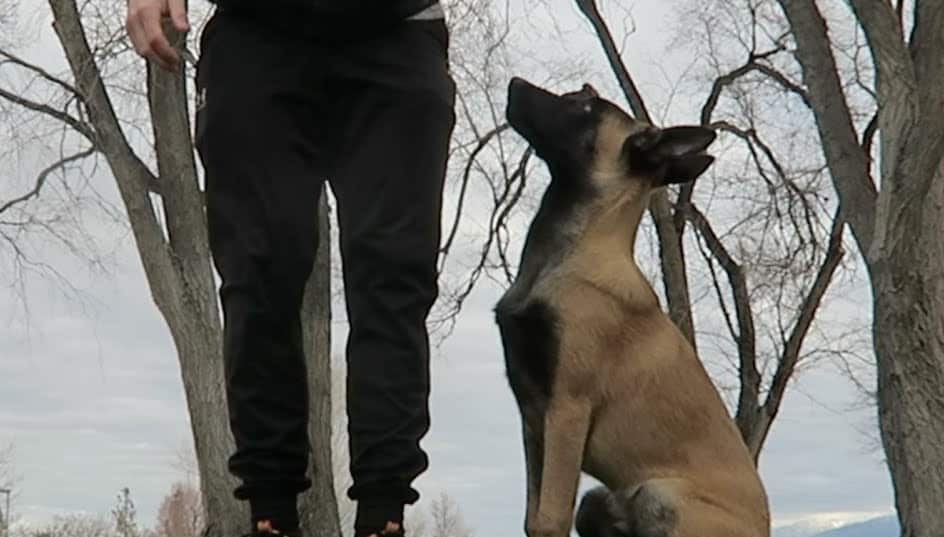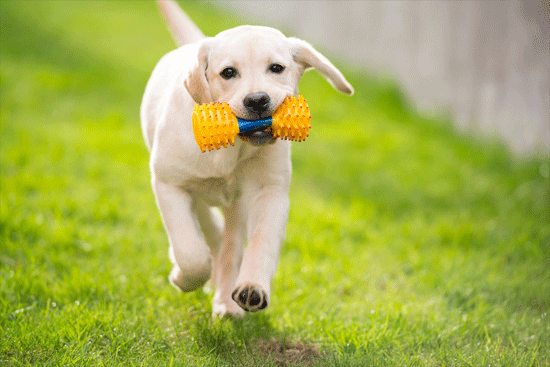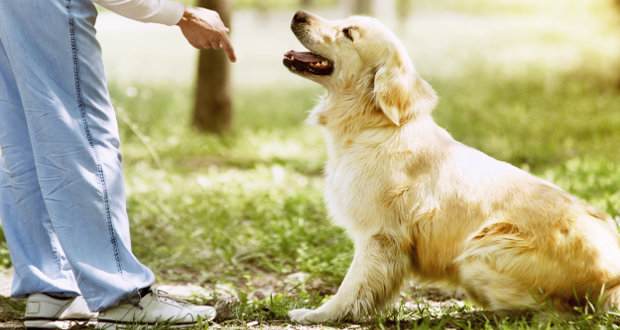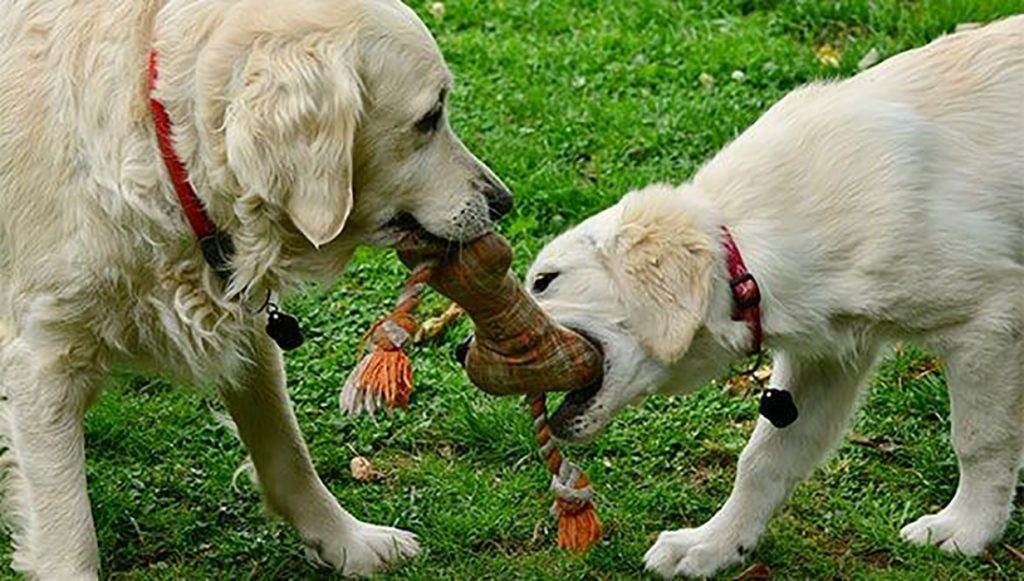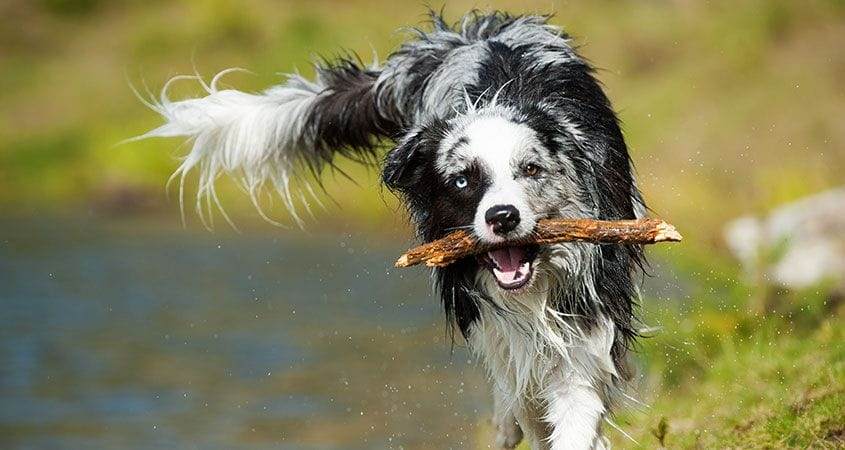If you just got a new puppy recently, and you’re looking forward to taking the puppy out for a walk, you only need to get a collar and a leash and then head out with your puppy in town. You need to introduce the leash to puppy, take him to a walk indoors and the backyard. Keep the puppy on your side when walking. Some puppy owners also keep treats handy to reward good behavior.
Although it’s true that you can begin training your little pup to walk with you and also obey your commands pretty early on in its development, you may not be ready to head out into the big world just yet.
Most veterinarians often recommend keeping your puppy away from the dog parks and also walking outside your home until after it has gotten all the essential vaccinations.
Remember that you cannot get a rabies vaccination until your puppy attains the age of three months at least, and it won’t receive its final booster until it is 16 weeks old or even longer, contingent on when you begin the process.
Here, you are already looking at approximately four months or even more, which is enough time for a developing dog to have enough pent-up energy and also pick up some bad habits.
How to Train a Puppy in 10 Easy Steps
#1 Introduce the Leash and Collar
You can introduce your puppy to its leash and collar, as early as a couple of weeks old. Wait until the pup is doing something positive like playing, feeding, or getting attention from you and then slip on the leash and collar.
The main idea is to get the puppy used to wearing them and also have it associate them with positive feelings only. If your canine friend fights against the collar, try using some toys or tasty treats to get it more comfortable.
Since training consumes a lot of treats and it is so important that we choose healthy treats only for the best interest of our dog’s health.
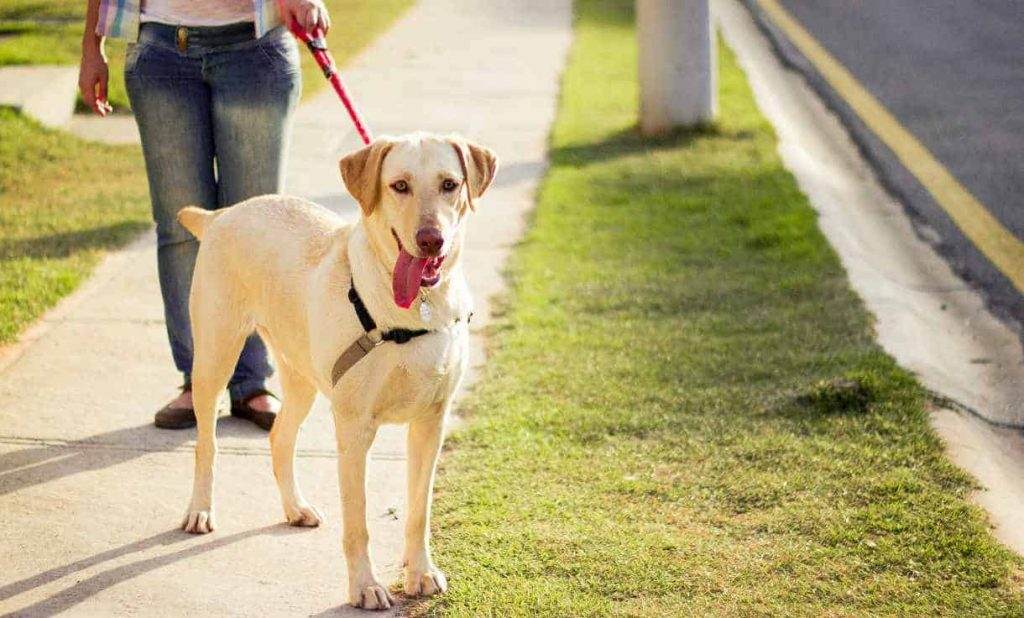
#2 Allow Your Young Puppy to Get Used to the Leash and Collar
You should allow your puppy to get used to a leash and collar before trying to walk it. Let it drag the leash around your house properly attached to its collar. By doing this, you will make it comfortable with its leash instead of getting afraid of it.
#3 Have Some Short Training Sessions With the Pup in Familiar Places
Remember that a puppy has a pretty short attention span, so you should not expect to keep its interest in the training for a long time. Begin with just a simple walk around your backyard or house.
These are places where the puppy is already familiar with the smells, which means that it will not be inclined to break off in many directions to smell any exciting new odors.
#4 Assist the Puppy in Learning to Follow
If possible, you would like to be leading your fur friend whenever you go for a walk and not the other way round. However, this is harder to do, especially with a big adult dog than a young puppy, so there is no better time to begin training than now.
In general, all you need to do is put on its leash and then walk a couple of steps. When the puppy inevitably begins to pull, you should turn around and walk in your opposite direction. You will start and stop a lot at the beginning, but eventually, it will get it.
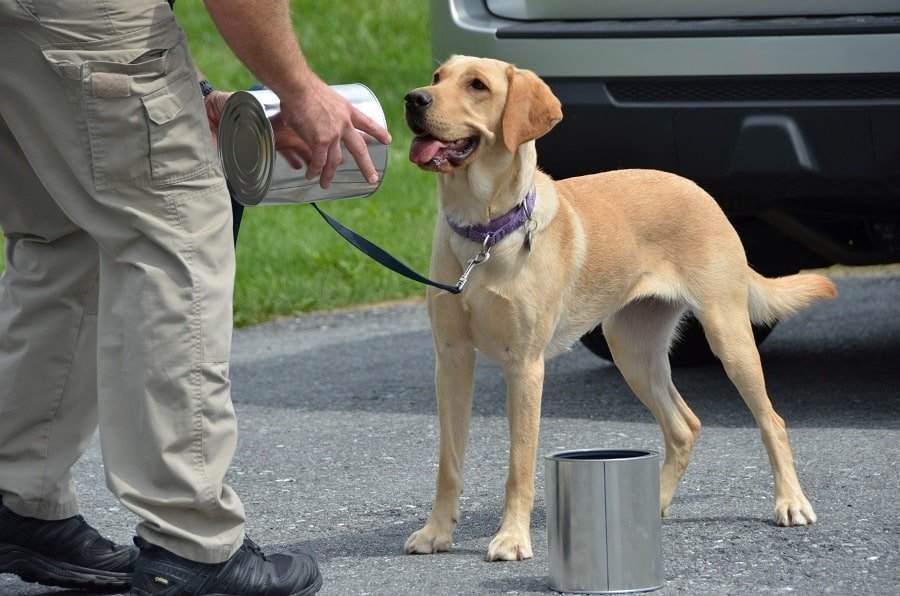
#5 Praise and Reward Good Behavior
Every time your canine friend is walking beside you on a leash, which is also known as “heeling,” you should heap on some praise and then reward it with occasional treats. Avoid pulling your pup along.
If it resists leaving a particular spot, pulling the lead can eventually injure him. Instead, you should focus on rewarding the dog for coming whenever you call it to keep walking along.
But if it is especially persistent, you may have to intervene and also redirect its attention back to the walk and far away from the things or places with many new smells. To reinforce this training, you can reward it with praise or tasty treats when it does follow.
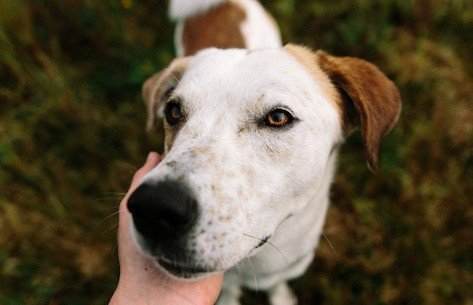
#6 Keep a Short But Loose Leash
Keeping your puppy on a short leash is incredibly integral, especially when it comes to success in leash training. The less room your puppy has to stray from your side, the easier it will be for it to learn to walk right next to you.
As it begins to get the hang of various things, you can release the lead for a short time, either by giving less slack from your hands or using a retractable leash.
And for a more in-depth article on how to make your dog walk on a loose leash, make sure to check the article and solve all your leash problems.
#7 Keep the Puppy at Your Side
Just like using a short leash, taking a walk with your pup at your side instead of being in front of you enables you to control its direction. When puppies are allowed to walk behind or in front, they often tend to wander away and smell everything.
That will also help in preventing the leash from getting tangled underneath it.
Again, you can begin to be a bit lenient with your dog as it becomes more learned, but it’s good to keep it close while still a small puppy.
Always remember that dogs are usually packed animals. If it sees you as the leader of the pack, it will fall in line in the long run and become a great walking partner.
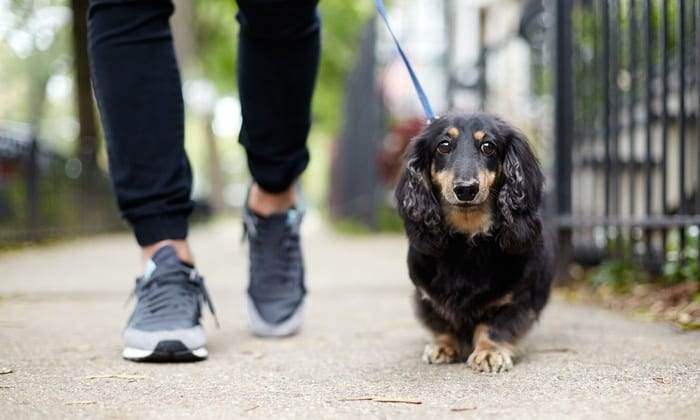
#8 Give Your Puppy Time to Relieve Itself
For most dogs, a good long walk is an opportunity for it to relieve itself. However, dogs naturally love to mark their territories so they might want to sniff around often to find the ideal spot.
If you realize that your puppy wants to relieve itself, you can stop walking and offer it more leash to discover and do its business. Once it is done, ensure that you reward it with praise or tasty treats.
One thing you should remember is that dogs don’t always empty their bladder at once, which means some dogs might look for multiple places to urinate.
It is crucial that you reward it only during the first time; otherwise, it will begin understanding positive connections with marking. That makes for a more difficult walk. Once it understands it only gets the one chance to relieve itself, it will begin walking better.
#9 Get a Pace
Most dogs are usually curious, so they tend to run to specific spots during your walk or even linger in some of their favorite spots. It is essential to pick a certain pace that’s comfortable for you and your dog.
You don’t want it to pull or even lag because this is where most injuries often occur. If you realize your dog is struggling to keep a particular pace, always stop and wait for it to return to you and then reestablish a comfortable pace for both of you.
#10 Practice Obedience Training
Your dog is usually ready to go out on some walks, between the age of 3 months and six months. It is also an incredibly good window to begin obedience training.
You can start with a few basic commands like “stay,” “sit,” “heel,” “come,” and “down,” and ensure that everyone else helping with the training is pretty consistent, utilizing the same gestures and words. Otherwise, your puppy will become confused in the process.
One of the effective ways to teach your puppy these basic commands is by using the “Ask, Tell, and Command” approach. The main idea is that you first ask your canine friend to do something, like “come.”
You can then tell it to do it utilizing a firm voice, especially if they don’t comply during the first time. If the firm voice still doesn’t work, try repeating the command as you physically pull your puppy to you.
Whether your pup comes on its own or you bring it over, you should offer praise immediately. That will help it associate completing that action with a good reward, and it might do it sooner the next time.
You can keep up with your training and remain consistent. Very soon, your puppy will obey you fast without even thinking about it.
For more training, don’t miss out my 15 dog training commands article which includes step by step process which I personally follow with my dogs.
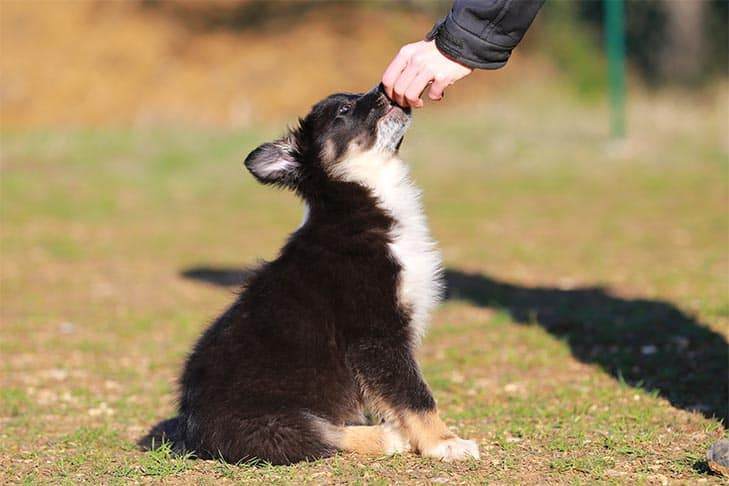
How to Choose the Best Puppy Lead
Nowadays, there are many different varieties of dog leads in the market. The first lead for your puppy should be relatively short and comfortable to handle. You should be able to control your dog at all times.
Always remember that you should only introduce retractable varieties or long leashes at a later stage when both you and your puppy are comfortable walking together.
Common Difficulties Reported to Us When Walking on the Lead
Dogs that have difficulty walking on the leads fall into one of the following two categories:
The Puppy That Refuses to Walk
Some puppies refuse to walk, and no amount of persuading by the pet owners can get the puppy to start moving. If that happens to you, you might be forced to pick your pup up and then return home.
Always be kind because your canine friend is likely to be a bit scared of the unknown and noisy outdoor world.
However, you should go back to training your pup at home to accept its lead and also walk with you. Always make sure that your puppy gets rewarded every time for good behavior. These rewards can also be special playtime, appreciation and not always has to be treated.
If the puppy is scared of the sounds, scents, or sights of the outside world, you might have to gradually introduce it to these, before you start walking it.
The Leash Puller Puppy
A puppy that pulls on the leash is usually a pretty enthusiastic and energetic pet that cannot wait to explore the world. This puppy will benefit from most lessons at home.
You can walk the pup up and down your hallway or backyard, keeping the dog leash relatively short and commanding them to “Walk.” If they walk well with a loose lead, always reward them using a “Good Dog” praise and a delicious treat.
If they begin pulling, stop walking, and then wait until your dog is calm. Once the dog learns the Walk command effectively, you can then start the same process in your street. It might be even easier to work on the training when your dog has used some energy, for instance, on your way back from a walk.
If your puppy is a strong breed or is difficult to walk, you might need to consider utilizing a walking harness.
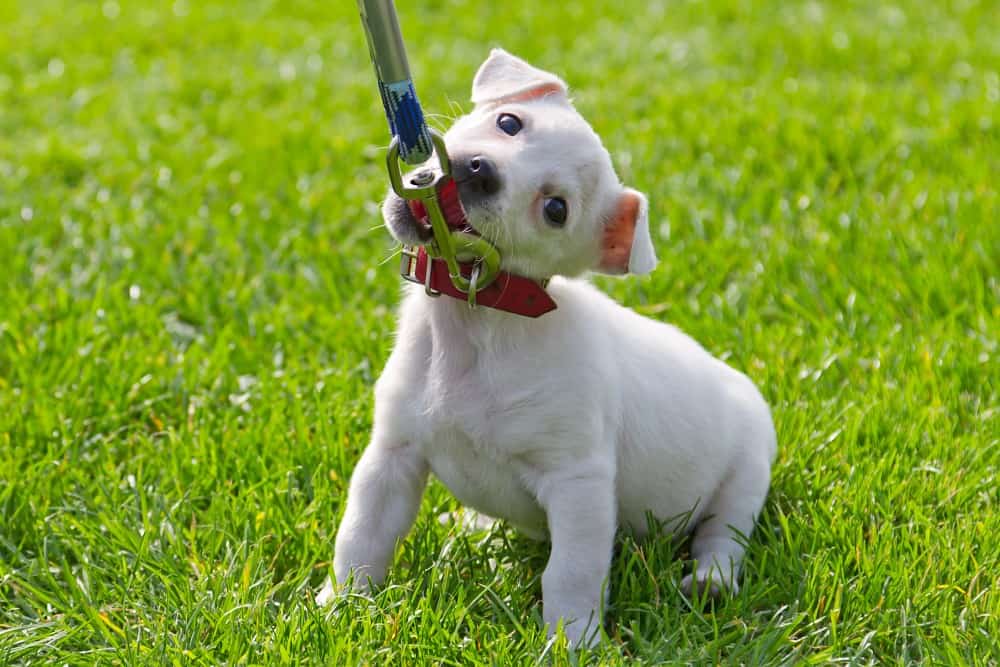
How to Walk with a Pack of Puppies
When leash training your puppy, it is recommended that you walk it alone, even if you have some other dogs in your home. Having several dogs can be incredibly distracting and dangerous as well.
Until you know that your pup is trained and is quite familiar with its moods and temperament, you should walk the puppy by itself.
When you think it’s ready, you can then walk several dogs at once using the same lead by incorporating something known as a “coupler,” which usually separates the leashes to minimize tangling.
How Would You Walk Your Puppy at Night
At some point, you might be forced by circumstances to walk your dog at night. It’s even more important to follow some effective leash training tips when you are walking a puppy at night because it‘s more likely to pick up on some things you cannot see like night-life.
Don’t allow your dog to pull and tug the leash from your hands and make it hard to find it in the dark. Also, keep it pretty close and walk on a pathway, most likely in enough lighting or the glow of the streetlights.
Easiest Ways to Stop Unwanted Habits
Most often, dogs have all kinds of bad behaviors on walks. Among the most common habits is pulling. If your puppy pulls, you should give it less slack on its leash. The more lead your dog has, the more permission it thinks it has to start exploring.
Also, if your puppy pulls, stop walking immediately and utilize a verbal cue such as “no pull” or “oops.” Wait for a loose leash shortly before you continue walking.
Remember to use positive reinforcement and treats when your puppy is behaving correctly during leash training, just like in any other training.
If you realize that your puppy is pulling for a particular reason: other dogs, strangers, wildlife, etc., it may be best to wait until the new encounter has passed or walk another direction. Again, you should avoid injuring the dog, or allowing it to think that pulling is fine.
If you let it pull and try walking faster to keep up with it, you are teaching your dog that all it has to do is speed up to get the walk quicker, which might turn your relaxed walk into a pretty full-on sprint.
Conclusion
By learning the best way to leash training your dog, you will strengthen and also deepen your relationship with your best walking partner. Taking walks together is also a great bonding time for you and your dog.
Puppies don’t instinctively comprehend how to walk on the leash. Once you pull, puppies instinctively pull back, but if you allow the dog to win, that’ll make it even harder for them to resist the urge to do it.
It’s much easier to train a puppy than a large adult or adolescent dog. If you have a small puppy, then now is the ideal time to train it to walk properly on a leash. Start once you bring the new puppy home.
Regardless of where you are starting from during the training, with a little encouragement, patience, and love, you will be able to go on some special and memorable journeys when walking your dog.
References
- https://chiron-k9.com/wp-content/uploads/2017/11/MDD.pdf#page=52
- https://books.google.com/books?hl=en&lr=&id=6gpmZ1AgaJ4C&oi=fnd&pg=PA69&dq=Start+Walking+Your+Puppy&ots=Dg7p34VCox&sig=P411fubY-NQMnTg70huIHGqH3II
Table of Contents

